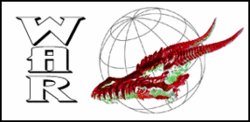1755 War
| Name(s): | 1755 War |
| Start of hostilities: | 1755 |
| End of hostilities: | 1761 |
| Winning side: | Losing side: |
 England |  France |
 Kemr |
|
| Resulting treaty/treaties: | Treaty of Paris |
| Major consequences: | Ontario transfers to FK rule |
The 1755 War was fought technically between the Crowns of England/Scotland, allied with Kemr against France, although in practice by colonies of those nations in North America as each vied for control of the fur-trade. The war continued until 1761. Of the three crowns, Scotland was the least willing participant, largely supporting allied England and Kemr out of obligation.
Causes
The land between the Appalachians and the Mississippi river was claimed by the French as well as all three British Kingdoms. In actuality, the land was largely inhabited by Native Americans. All four European countries wanted to secure exclusive control of the fur trade. Regions north of the Great Lakes were coveted by both sides, although their interest was mitigated by the inhabitants of Mueva Sefarad who had yet to reveal their true ancestry.
Results
France was forced to renounce its claims to what later became pieces of Aquanishuonigy and Castreleon New. By the Treaty of Paris (1763) New Francy was restricted on the south to its modern size, but later struggles and territorial claims would lead to the losses of the highlands which were to become Utawia and Mascoutensi.
A further series of treaties between the three Britannic Kingdoms and New Francy helped establish the modern borders, granting neofrancien access to Hudson's Bay. In return, a sum of reparations was paid to the Hudson's Bay Company as well as free passage through New Francy to the Great Lakes and the use of Neofrancien ports duty-free.
Some historians would trace the initial animosity between New Francy and Louisianne to this time-period, as some in New Francy had appealed to the Naval Ministry for support, but due to pressure from the Prince of Louisianne, Jean-Baptiste Le Moyne de Bienville, aid was slow in coming, and when it arrived it was not in the quantities of men and materiel requested. This act was later revisited on Louisianne in the 1828 War. While this "simplistic explanation" view was widely accepted in the 1800s, modern research suggest this long-standing schism was due to a larger number of problems. With strict regard to the historical record, it can only be said that there may have lingered some resentment from this time, but that the later schism between these two nations cannot be pinpointed to this one point in time, and is more due to the two nations' views on Republicanism.
Many other historians regard this conflict as the catalyst that brought the North American League into existence. The previous Wars for American Territory had resulted in the policy of European powers competing for the support of the Native Tribes, giving them weapons and building increasingly strong trade with them. By 1755 the results had begun to show themselves--namely, that the Natives as a group were on par militarily with the colonists and had strong ties to many colonies. Indeed the ties to neighbors were proving stronger than to far-off governments, another reason this particular war lasted as long as it did. Simply, local enthusiasm for fighting in this conflict was relatively low and decreased over time.
